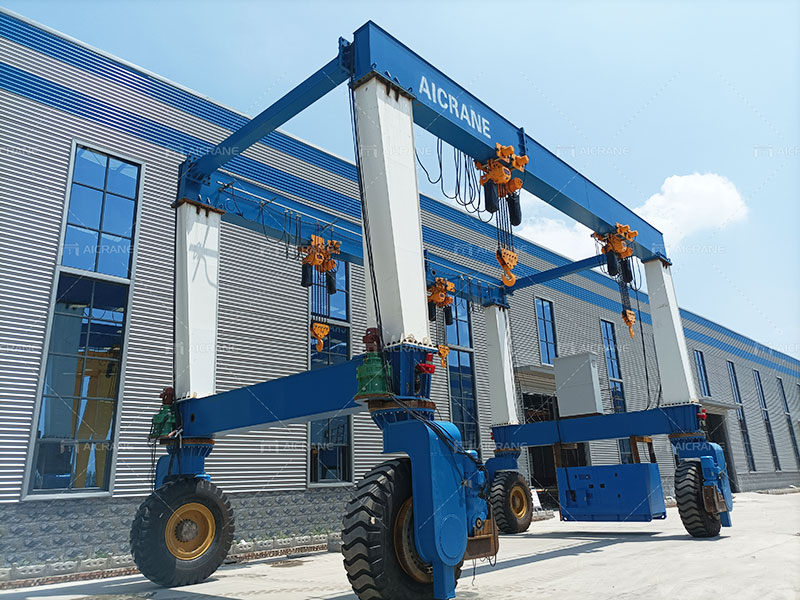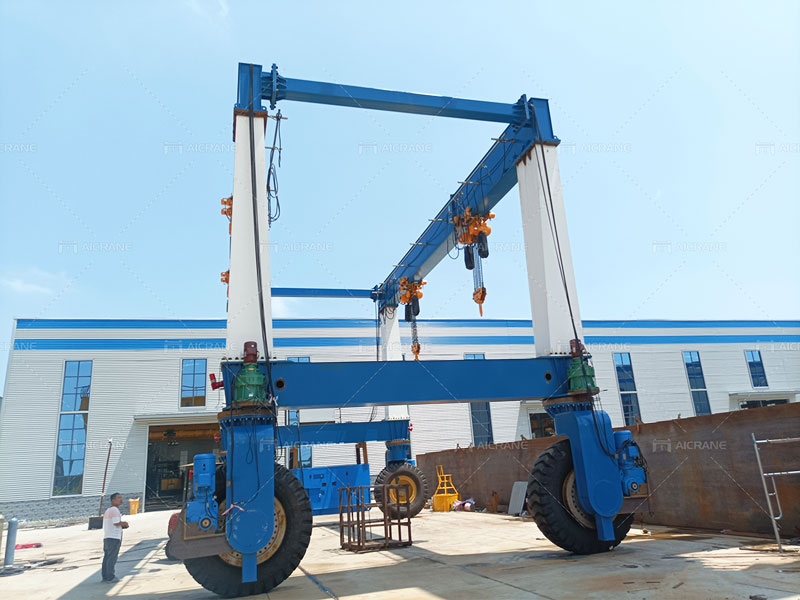In the realm of material handling, the choice of machinery can significantly impact operational efficiency and overall productivity. Among the various options available, rubber tyred gantry cranes (RTGs) stand out as a strategic choice for businesses engaged in container handling and logistics operations. This article explores the key strategic benefits of employing rubber tyred gantry cranes in material handling, with a particular focus on their design and lifting capacity.
Enhanced Operational Flexibility
Rubber tyred gantry cranes are celebrated for their remarkable operational flexibility, allowing them to navigate container yards with ease. Unlike traditional fixed cranes or gantry cranes with limited mobility, RTGs feature a rubber tire undercarriage that facilitates smooth movement in various directions. This agility is crucial in optimizing storage space and expediting the loading and unloading processes in dynamic logistics environments.
The strategic advantage lies in the ability of RTGs to adapt to changing operational needs. Whether it’s repositioning containers or swiftly responding to fluctuating cargo volumes, the flexibility of rubber tyred gantry cranes(Козловой кран на пневмоходу) ensures a seamless and efficient material handling workflow.

Superior Lifting Capacity
Lifting capacity is a pivotal consideration in the selection of material handling equipment, and RTGs excel in this regard. With robust lifting capabilities, rubber tyred gantry cranes are well-suited for handling heavy containers in shipping terminals and ports. The lifting capacity of RTGs is often categorized into main hoist capacity and auxiliary hoist capacity, providing versatility in managing different types of cargo efficiently.
The strategic benefit of superior lifting capacity lies in the crane’s ability(Кран козловой 50 тонн) to handle larger loads, facilitating faster loading and unloading processes. This directly translates into increased throughput and reduced turnaround times, contributing to heightened operational efficiency and customer satisfaction.
Minimized Infrastructure Requirements
Unlike traditional gantry cranes that may necessitate extensive infrastructure modifications, rubber tyred gantry cranes boast a design that minimizes such requirements. The mobility afforded by the rubber tires eliminates the need for fixed runways, enabling a more straightforward installation process. This strategic advantage translates into cost savings and faster deployment, allowing businesses to swiftly adapt their material handling infrastructure to evolving needs.
Additionally, the reduced infrastructure demands make RTGs a viable option for facilities with space constraints. The ability to deploy these cranes in diverse environments, such as container yards and warehouses, provides businesses with a strategic edge in optimizing their operational footprint.
Safety and Precision in Operations
Safety is a paramount concern in any material handling operation, and rubber tyred gantry cranes are designed with features that prioritize the well-being of both personnel and cargo. Advanced control systems, such as anti-sway technology and collision avoidance systems, enhance the precision and safety of container movements. The strategic benefit of these safety features is twofold: not only do they reduce the risk of accidents and injuries, but they also contribute to minimizing potential damage to valuable cargo.
The precision afforded by RTGs in container positioning and stacking further adds to the strategic advantages. Accurate cargo placement ensures efficient space utilization within container yards, optimizing storage capacity and facilitating streamlined inventory management. Businesses can benefit from reduced product damage, decreased insurance claims, and enhanced overall operational reliability, all contributing to long-term strategic success.

Environmental Considerations
In an era where sustainability is a key business driver, rubber tyred gantry cranes offer strategic advantages in terms of environmental impact. These cranes are known for their energy-efficient operations, with regenerative braking systems that harness and reuse energy during deceleration. This not only reduces energy consumption but also contributes to lower operational costs over time.
Furthermore, the mobility of RTGs reduces the need for extensive infrastructure, minimizing the environmental footprint associated with construction and maintenance. The strategic benefit lies in aligning material handling operations with sustainable practices, meeting the growing demand for eco-friendly solutions and enhancing the corporate image of businesses committed to environmental stewardship.
In the competitive landscape of material handling, the strategic benefits of rubber tyred gantry cranes are clear. Their enhanced operational flexibility, superior lifting capacity, and minimized infrastructure requirements position them as a valuable asset for businesses engaged in container handling and logistics operations. The adaptability of RTGs to changing operational needs and their efficiency in managing heavy loads contribute to heightened productivity and overall operational success. As the demand for efficient and flexible material handling solutions(Aicrane) continues to rise, the strategic choice of incorporating rubber tyred gantry cranes becomes paramount for businesses seeking a competitive edge in the dynamic world of logistics.